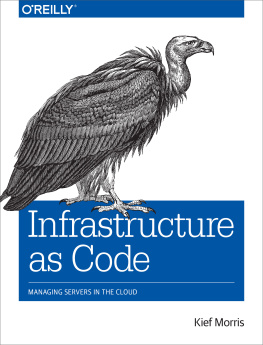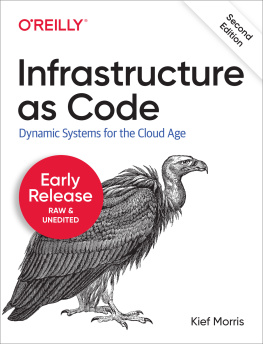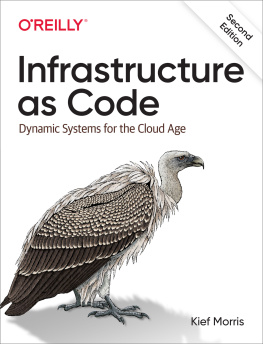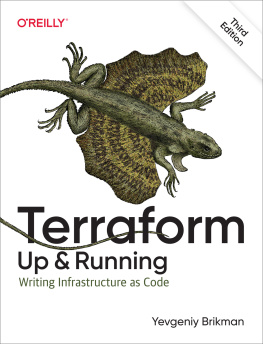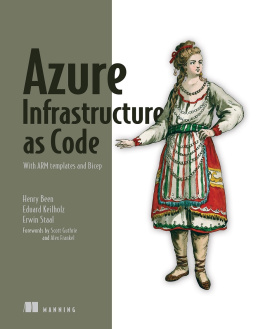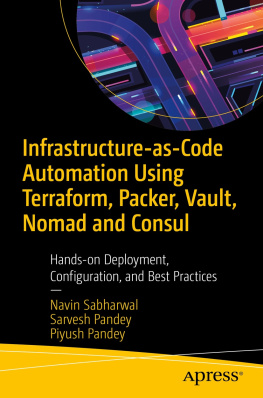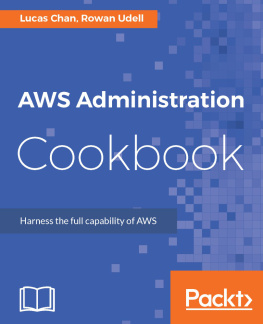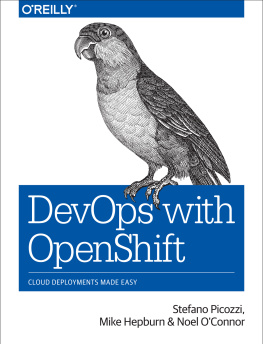Kief Morris - Infrastructure as Code: Managing Servers in the Cloud
Here you can read online Kief Morris - Infrastructure as Code: Managing Servers in the Cloud full text of the book (entire story) in english for free. Download pdf and epub, get meaning, cover and reviews about this ebook. year: 2016, publisher: O’Reilly Media, genre: Computer / Science. Description of the work, (preface) as well as reviews are available. Best literature library LitArk.com created for fans of good reading and offers a wide selection of genres:
Romance novel
Science fiction
Adventure
Detective
Science
History
Home and family
Prose
Art
Politics
Computer
Non-fiction
Religion
Business
Children
Humor
Choose a favorite category and find really read worthwhile books. Enjoy immersion in the world of imagination, feel the emotions of the characters or learn something new for yourself, make an fascinating discovery.
- Book:Infrastructure as Code: Managing Servers in the Cloud
- Author:
- Publisher:O’Reilly Media
- Genre:
- Year:2016
- Rating:5 / 5
- Favourites:Add to favourites
- Your mark:
Infrastructure as Code: Managing Servers in the Cloud: summary, description and annotation
We offer to read an annotation, description, summary or preface (depends on what the author of the book "Infrastructure as Code: Managing Servers in the Cloud" wrote himself). If you haven't found the necessary information about the book — write in the comments, we will try to find it.
Virtualization, cloud, containers, server automation, and software-defined networking are meant to simplify IT operations. But many organizations adopting these technologies have found that it only leads to a faster-growing sprawl of unmanageable systems. This is where infrastructure as code can help. With this practical guide, author Kief Morris of ThoughtWorks shows you how to effectively use principles, practices, and patterns pioneered through the DevOps movement to manage cloud age infrastructure.
Ideal for system administrators, infrastructure engineers, team leads, and architects, this book demonstrates various tools, techniques, and patterns you can use to implement infrastructure as code. In three parts, youll learn about the platforms and tooling involved in creating and configuring infrastructure elements, patterns for using these tools, and practices for making infrastructure as code work in your environment.
- Examine the pitfalls that organizations fall into when adopting the new generation of infrastructure technologies
- Understand the capabilities and service models of dynamic infrastructure platforms
- Learn about tools that provide, provision, and configure core infrastructure resources
- Explore services and tools for managing a dynamic infrastructure
- Learn specific patterns and practices for provisioning servers, building server templates, and updating running servers
Kief Morris: author's other books
Who wrote Infrastructure as Code: Managing Servers in the Cloud? Find out the surname, the name of the author of the book and a list of all author's works by series.

